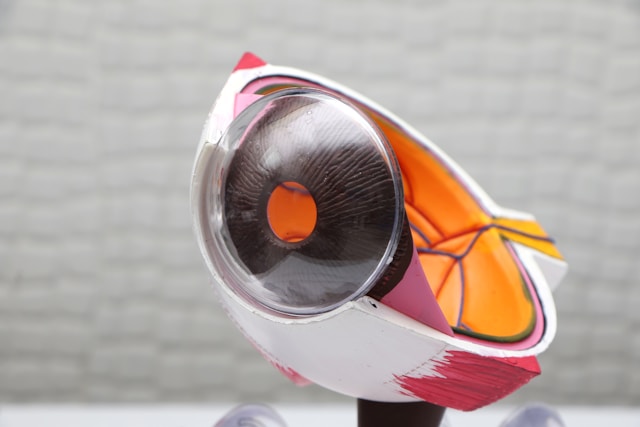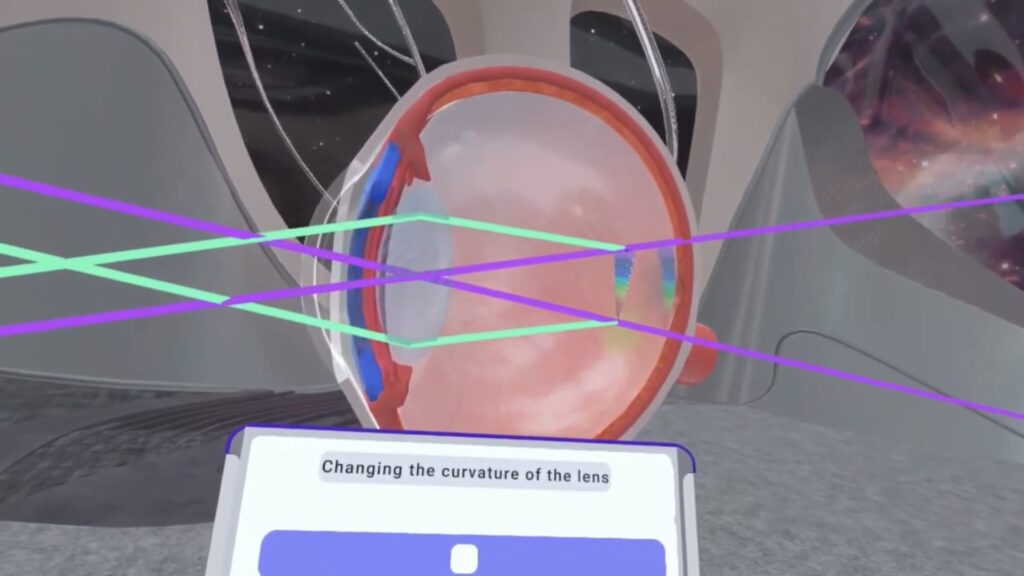

More educators are looking for better ways to teach organ structure, and XReady Lab’s latest article on LinkedIn is gaining attention. It recently reached page 3 on Google, reflecting the growing interest in innovative learning tools.
One of the biggest challenges in biology is teaching human eye anatomy. The eye is a complex internal organ that students can’t dissect in class, yet it plays a key role in many lesson plans worldwide. This is where virtual reality comes in, offering a hands-on way to explore anatomy like never before.

In standard school curricula, learners often spend multiple lessons studying the inner workings of the human eye. The challenge lies in the fact that real dissections of a human-eye are generally off-limits for ethical and legal reasons. As a result, teachers resort to two-dimensional diagrams or static plastic models:
This gap in hands-on learning can leave students with only a superficial grasp of eye anatomy, especially for courses such as human-eye Cambridge curriculum, human-eye IB, or human-eye AP biology.
Educators have long called for interactive lessons that link concepts from biology with physics. For example, understanding how light rays refract inside the lens or how the pupil reacts to changes in brightness ties into STEM-lab objectives. Bridging biology with optics can deepen comprehension, but achieving this link typically requires specialized equipment—something most schools do not have.
XReady Lab’s “Structure of the Eye” application answers this demand by allowing students to assemble the organ gradually, like a puzzle. Instead of seeing dozens of parts at once, learners start with three basic layers and modify them to form structures like the cornea, iris, and lens. Each adjustment is reflected in real time:
By witnessing these stages, students achieve sequential understanding — a major leap from static models.
Many teachers aim to incorporate concepts from physics into eye anatomy. That’s where technology in schools helps students visualize lens curvature, pupil diameter, and how each variable alters the path of light:
These features encourage a deeper understanding of eye anatomy 3D concepts, vital for classes governed by human-eye National curriculum in England, human-eye Indian curriculum CBSE, or human-eye Scuola secondaria in Italia.

The application aligns with various standards:
These specific uses demonstrate how technology-based solutions satisfy regional guidelines and unify advanced teaching methods around the globe.

XReady Lab’s software is part of a broader education virtual-reality package that blends biology with physics in a digital-classroom environment. The goal is to enhance learning while preserving safety and accessibility. Rather than dissecting real organs or importing expensive equipment, educators can utilize the system’s user-friendly interface to run interactive classroom activities.

Although the focus here is eye anatomy, the software connects naturally to VR-physics labs or VR-chemistry modules, enabling more comprehensive STEM-lab experiences. Lessons can integrate tasks like measuring light refraction or analyzing the role of reflection in vision, bridging biology with the fundamentals of physics.
School systems that once relied on plastic demos now see the benefits of virtual reality in classrooms. Students immersed in a digital environment can see, tweak, and better remember the steps that transform a few layers into a fully functional human-eye structure.
In short, the interactive methodology entices teachers who seek creative ways to incorporate more advanced forms of learning in the digital era.
An “exciting immersion into the study of eye anatomy” is no longer a distant ideal. With sequential tasks and real-time feedback, the structure of the eye becomes truly tangible. The approach surpasses standard plastic models by offering deeper exploration, bridging concepts from multiple sciences, and motivating students to engage with complex material.
XReady Lab’s solutions are shaping what human-eye lesson plans can look like in the digital-classroom age—helping educators overcome limitations of traditional methods and inspiring students to see biology in a new, more dynamic light.
Schools seeking more advanced interactive content can explore the free demo package featuring lessons in biology and physics. It’s a practical way to discover how immersive learning fosters motivation and clarity, ultimately transforming the educational experience.
Frequently Asked
We prodive VR biology, VR physics, and VR chemistry simulations. Please, check our catalog.
Please, fill the form to get demo labs for free.
Please contact our customer support service at support@xreadylab.com or book a call with the team to find out the conditions and book the VR class set up at your school.
Subscription to XReady Lab interactive VR labs. If you are a school, then you are also given access to the VR classroom system. VR class system helps you easily launch VR lessons for a large number of students, follow the experience of each student, as well as customise the content without developers.
We adhere to the world’s generally accepted recommendations and research. Our products are suitable for children from 12 years old.